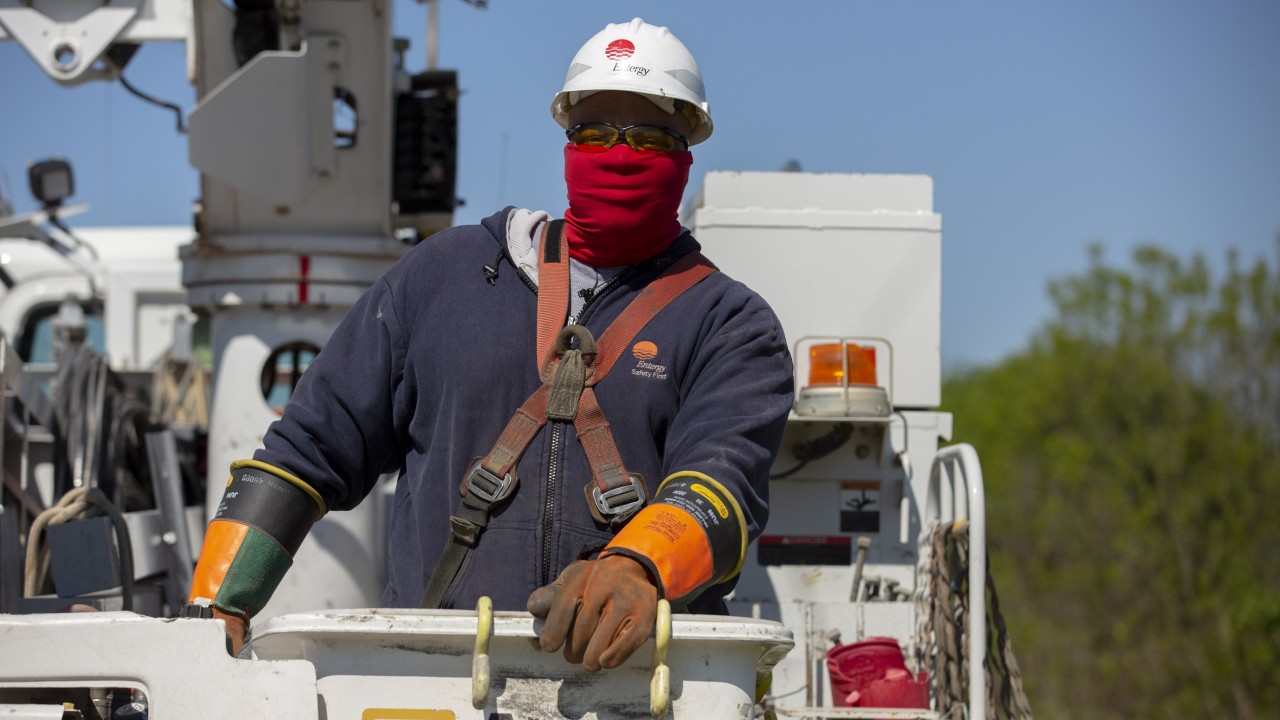Insights > A Different Kind of Storm
A Different Kind of Storm
05/04/2020

When severe weather threatens, you likely begin to prepare at first alert – whether that’s evacuating to another city or hunkering down at home. We also start preparation long before storms move in, with the end-goal of restoring power in the communities we serve as quickly as it’s safe to do so.

That’s on a normal day, or for a standard storm if there’s such a thing. With COVID-19 affecting all of us, we’re living in a new reality. You may be staying at home much more than usual. Your refrigerator and freezer are probably stocked with back-up groceries. Your reliance on electricity is now all day, every day, and we understand this.
These new obstacles came into full view when Entergy experienced the unique challenges of managing storm response efforts in the face of the pandemic for the first time in April. From Southeast Texas to the Mississippi Delta, severe weather caused significant damage in its wake, causing nearly 200,000 customer outages spanning our four-state service area.
As we mobilized more than 5,000 employees and contractors for cleanup and restoration, routine logistics proved difficult as typically done. Adjustments to lodging, meals and staging locations ultimately impacted some efficiencies our standard plans account for.
“This storm was unique because never before have we had to deal with a storm in the context of a global pandemic,” said Eli Viamontes, vice president, utility distribution operations. “What wasn’t unique was our ability to overcome the challenges to safely restore power.”

What’s Changed
Not only was lodging scarce to begin with due to COVID-19, but our needs doubled as social distancing protocols required a change in process from double occupancy to single occupancy rooms. This meant the team was more spread out and the travel time increased for some of the crews that were stationed farther away from job sites. With local restaurants closed, meals were unavailable, so crews staggered pickup of boxed lunches and dinners, sometimes delivered from as far as two hours away.
To help maintain social distancing, office settings and crew staging locations were adjusted, which impacted start times in the field. Instead of rallying together to begin the day, for example loading equipment into trucks, line workers staggered start times at staging sites.
During damage assessment, one person per vehicle became the new rule, and for helicopter patrols only a pilot and co-pilot were allowed to ride together at an increased distance. The use of drones for scouting increased. And face coverings were used when social distancing was not possible on the job during restoration work.
“Since early this year, Entergy has been preparing for impacts due to COVID-19. When we have severe weather, it’s really a storm within a storm,” said Viamontes. “The combined challenges are new but delivering safe and reliable power to customers remains our focus.”

Looking Ahead
With hurricane season around the corner and no definite end in sight to this pandemic, we are all facing a new normal. Our commitment to providing reliable power to the communities we serve remains and is more critical than ever – keeping your homes, small businesses, grocery stores and medical facilities powered.
Planning for the impacts of COVID-19 began in January, and hurricane season preparation is a year-long effort. We have mutual assistance agreements in place with utility providers in nearby states to help build the needed work force when storms hit. As the COVID-19 situation evolves, we’ll proactively learn and adjust with your needs in mind.
Entergy line workers have always held a strong sense of duty and service to our communities and you, our customers. It’s in their nature to drive into disaster-stricken neighborhoods or remote locations to get the lights back on. That won’t change during the COVID-19 pandemic. What has changed, however, is how they do it.
Now, they may drive in separate trucks or eat alone in parked vehicles. They carry hand sanitizer, disinfectant wipes and don protective masks. They stand six feet apart during pre-job safety meetings and when working in the field. And their families, who often ask them to stay safe, have upped the cadence of those wishes.
